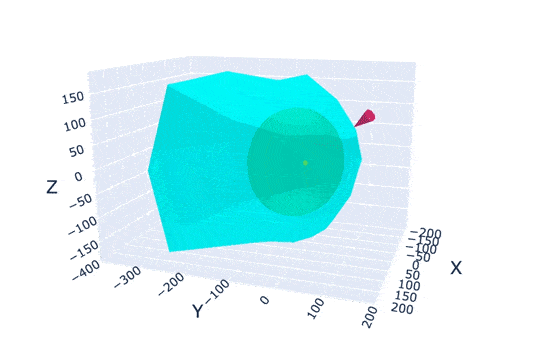
The solar system doesn’t end at Pluto or the icy belt of asteroids in the Oort cloud. In fact, the solar system is so huge that Voyager 1, the most distant human-made object, has been in space for more than 40 years and it still has not escaped the influence of the sun. The spacecraft is about 14 billion miles (22.5 billion km) away from the sun — about four times the average distance from the Sun to icy Pluto.
Although much of the solar system looks like empty space, it is in fact populated by solar wind and other electromagnetic radiation emanating from the sun. The sun’s sphere of influence is divided into various key regions, one of which is the heliosphere.
The heliosphere is a bubble-like region of the solar system, which is shaped like a long windsock as it moves with the sun through interstellar space. It is filled with the solar magnetic field and the protons and electrons of the solar wind (charged particles emanating from the sun).
Now, for the first time ever, astronomers have mapped out the heliosphere in three dimensions. The analysis confirmed suspicions from theoretical models that the heliosphere is shaped a bit like a comet, having a tail that’s about 350 astronomical units (one astronomical unit is roughly the distance from Earth to the Sun).
This is where the final frontier truly lies
The heliosphere’s outer boundary is known as heliopause. This is where the pressure from the solar wind, which is severely weakened so far away from the sun, is canceled by the pressure of interstellar space.

Using data from NASA’s Earth-orbiting Interstellar Boundary Explorer (IBEX) satellite, which measures charged particles flung from the very outer region of the heliosphere, researchers at the Los Alamos National Laboratory mapped the region in unprecedented detail. In the process, the three-dimensional map will now allow scientists to gain a better understanding of how solar and interstellar winds interact.
“Physics models have theorized this boundary for years,” said Dan Reisenfeld, a scientist at Los Alamos National Laboratory and lead author on the study, which was published in the Astrophysical Journal. “But this is the first time we’ve actually been able to measure it and make a three-dimensional map of it.”
Reisenfeld used a clever technique similar to how bats use sonar to detect their surroundings. Rather than detecting reflected acoustic waves, the astronomers measured energetic neutral atoms (ENAs) — particles resulting from the collisions between the solar and interstellar winds — to create a map of the heliosphere. Where the ENA count goes up, this could only mean that the boundary is close.
“The solar wind ‘signal’ sent out by the Sun varies in strength, forming a unique pattern,” explained Reisenfeld. “IBEX will see that same pattern in the returning ENA signal, two to six years later, depending on ENA energy and the direction IBEX is looking through the heliosphere. This time difference is how we found the distance to the ENA-source region in a particular direction.”
“In doing this, we are able to see the boundary of the heliosphere in the same way a bat uses sonar to ‘see’ the walls of a cave,” he added.
Previously, simulations that crunched numbers from measurements of galactic cosmic rays (an indirect indicator of ENAs), concluded that the solar system’s heliosphere is shaped croissant-like rather than like a comet. However, this newly published 3-D map suggests that the solar wind bubble is comet-like after all, although there are still uncertainties as to the heliosphere’s true shape due to the inherent limits of IBEX’s reach.
This isn’t the final word. The heliosphere may indeed have a more wacky shape and determining it is actually important from a practical standpoint. The heliosphere blocks 75% of galactic cosmic rays, which can catastrophically damage spacecraft and the DNA of any voyaging astronauts.






